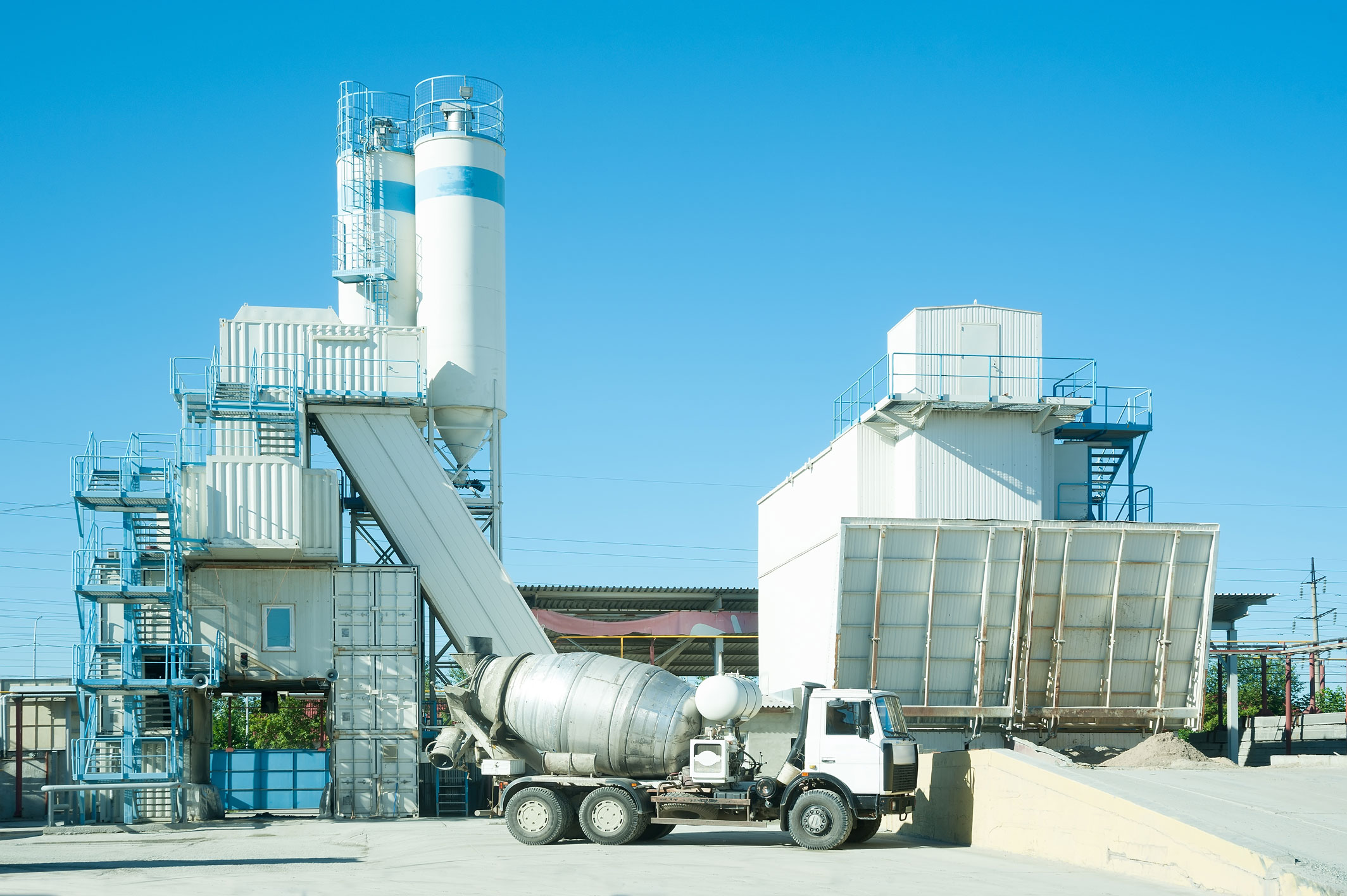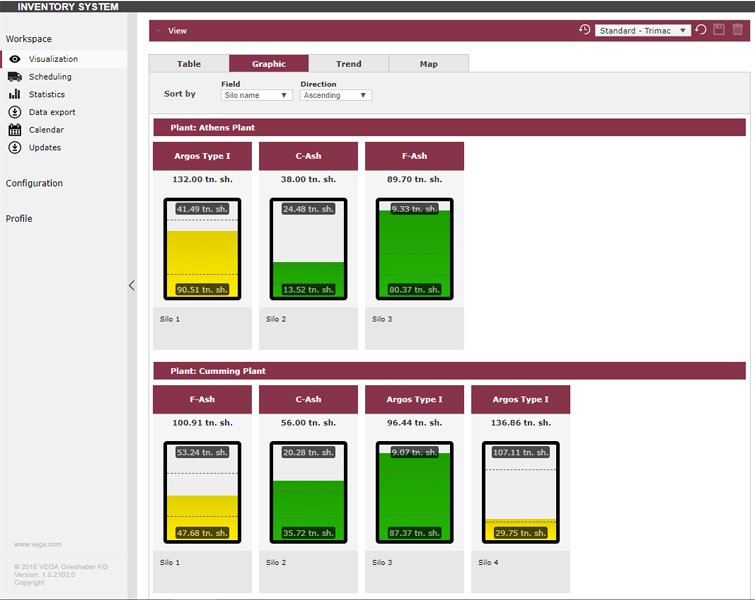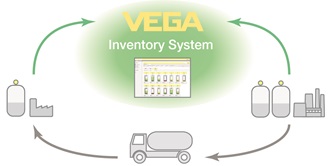A case for IIoT’s future in supply chain management
Imagine a world where you don’t run out of the necessities because a supplier restocks your shelves, silos or tanks before you ever run out. In the home, this could eliminate last minute runs to the grocery store for bread or milk, and in business, it would eliminate outages and unnecessary surpluses. IIoT, or the Industrial Internet of Things, is making this a reality in many industries already.
This paper will explore how one construction materials hauling company used level measurement sensors and IIoT networks to better manage their operation while simultaneously securing their customers’ supply chain and keeping costs low.
Two halves of the same process
Ready-mix concrete companies operate as a network of plants, each servicing a surrounding geographic area or territory. A batch-person coordinates with trucking companies to maintain the raw materials at these plants to meet daily production demands. This person has one objective every day: “Don’t run out.” Running out for the ready-mix plant means lost revenue and lost reputation with construction companies.
More often than not, ready-mix operations are unsure of how much cementitious material is in their silos because of how they manage inventory. Inventory has traditionally been tracked manually using a method called perpetual inventory. When a load of materials arrives, it’s marked on a spreadsheet. This method, however, leaves a lot of room for human error in the busy environment at a ready-mix plant – loads are unaccounted or forgotten, incoming amounts can be inaccurate, and leaking silos can go unnoticed. All of this eventually leads to a distrust in inventory count and leaves batch managers using a best guess to keep their operation running.
Trucking companies are responsible for hauling cementitious materials from depot sites to the individual ready-mix plants throughout the day. The hauling companies can’t see inventory levels at individual ready-mix sites, leaving them at the mercy of the ready-mix plants’ perceived demands. The ready-mix plant’s inherent distrust in their inventory, combined with their “don’t run out” objective causes the batch-person to order loads based on their desire to keep the silo full instead of the need to not run out. This causes inefficiencies in the supply chain – the equivalent of going on a road trip and filling up at every gas station you pass just so you don’t run out.
Meeting wants instead of needs
Ready-mix operations get up and running early in the morning, and that’s when they place their first orders with their hauling company – whether they need it at that time or not – just so they don’t run out. This scenario leaves the trucking company waiting in long lines at the depot, waiting in rush hour traffic, and waiting in more lines at the ready-mix plant before they can unload. All this waiting adds up to lost time equivalent to an additional delivery every day.

For trucking companies, money is made when wheels are moving on the road and deliveries are made. With fewer deliveries, the cost per delivery goes up, and that cost gets passed on to the ready-mix companies – all to meet an imagined demand and false desire to keep the silos full. The ready-mix operations need more accurate measurements in their silos, and the trucking companies need to see those measurements to maximize their drivers’ delivery capabilities.
Related industries
IIoT to the rescue
This is where IIoT – a network of interconnected sensors and intelligent systems sharing information over the internet – can help significantly and give organizations a competitive advantage if they’re willing to embrace the technology. Smart sensors connected to a network and presented on an easy-to-read display can easily solve this problem of inefficiency.
VEGA, a manufacturer of process instrumentation, has extensive experience providing logistical solutions to customers using level measurement instrumentation technology and IIoT. Using a combination of reliable and accurate level measurement sensors for better inventory tracking and a web-based software platform for information transparency can improve efficiency all around.
The first hurdle is truly knowing silo inventory because an organization can’t manage what they don’t know. The VEGAPULS 69, an 80 GHz radar, provides a non-contact level measurement, which can deliver an output to continuously track inventory. This sensor is the ideal measuring device to use with aggregates and cementitious materials because the sensor has no moving parts, and withstands dust, buildup, and noise. Once installed at the top of a silo, the radar sensor emits a microwave signal to the material below. The signal reflects off the material and returns to the sensor, and the signal’s time of flight is used to calculate level.
Data from every VEGAPULS 69 radar sensor is displayed on the VEGA Inventory System (VIS). VIS is a web-based software platform for remote inventory monitoring that pairs with VEGA measurement sensors to deliver up-to-date information about inventory, consumption patterns, and free space in storage silos. The VEGA Inventory System uses a convenient color-coded configuration, making it easy to understand inventory levels with a quick glance. When a silo’s bar is green, there’s no need for a shipment. When it’s yellow, the silo can take at least one load. And once the bar turns red, a shipment is needed right away.
All of this information can be securely viewed anywhere with an internet connection by the ready-mix plants and the hauling company. The transparency of inventory information is empowering, and it benefits both parties: hauling companies can focus on making more efficient deliveries and maintaining inventory while the ready-mix plants can focus on their own drivers and customers instead of worrying about replenishment plans.

Using an IIoT solution like VIS allows hauling companies to plan better and avoid time-wasters like rush hour traffic and busy times at replenishment depots and ready-mix plants. Busy days with a big concrete pour run more smoothly with this system in place, and conversely, if inclement weather brings the ready-mix business to a screeching halt, truck drivers can maximize that downtime by topping off silos and making additional deliveries instead of going home for the day and losing out on potential revenue. At the same time, ready-mix concrete plants maintain a secure supply chain.
Conclusion
The ready-mix and construction materials trucking industries are only just beginning to see the improved efficiencies IIoT can provide. The greatest gains for both industries are likely still ahead as more companies adopt this technology and way of doing business. This same application could easily be used in other similar industries with vast supply chains.
The ultimate goal for transportation companies is a scenario where drivers are not designated to a particular loop, but the entire truck fleet can move in an orchestrated and efficient way from terminals to plants, ensuring customers stay adequately stocked and drivers can keep hauling. This improved, more economical process will result in a better return for the trucking companies, which will allow them to keep costs down, and they can pass those savings to their customers.
The future belongs to companies that can get the most from their trucks and drivers, especially at a time when truck drivers are at a shortage. More deliveries with fewer drivers make planning smarter routes that much more important. Hauling companies that embrace IIoT technology like the VEGA Inventory System will be able to optimize their delivery networks based on the flow of traffic and the location of their trucks, raw materials, and plants in real time.
Related products
Export this article
Download as PDFShare this article
Comments ({{comments.length}})
{{getCommentAuthor(comment, "Anonymous")}} {{comment.timestamp | date : "dd.MM.yyyy HH:mm" }}
{{comment.comment}}


